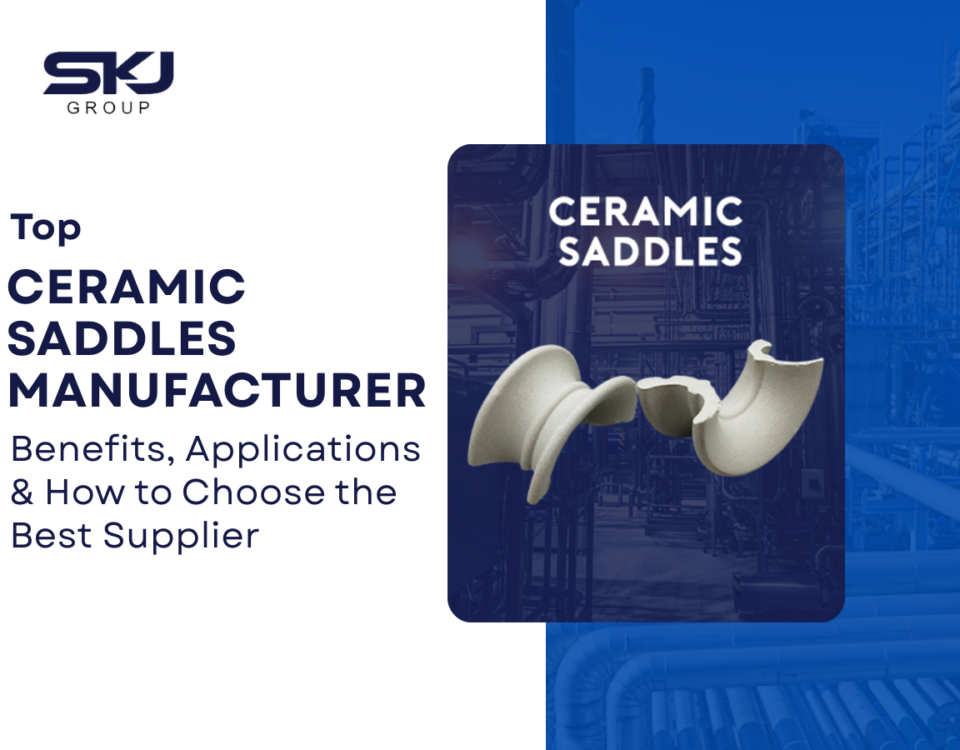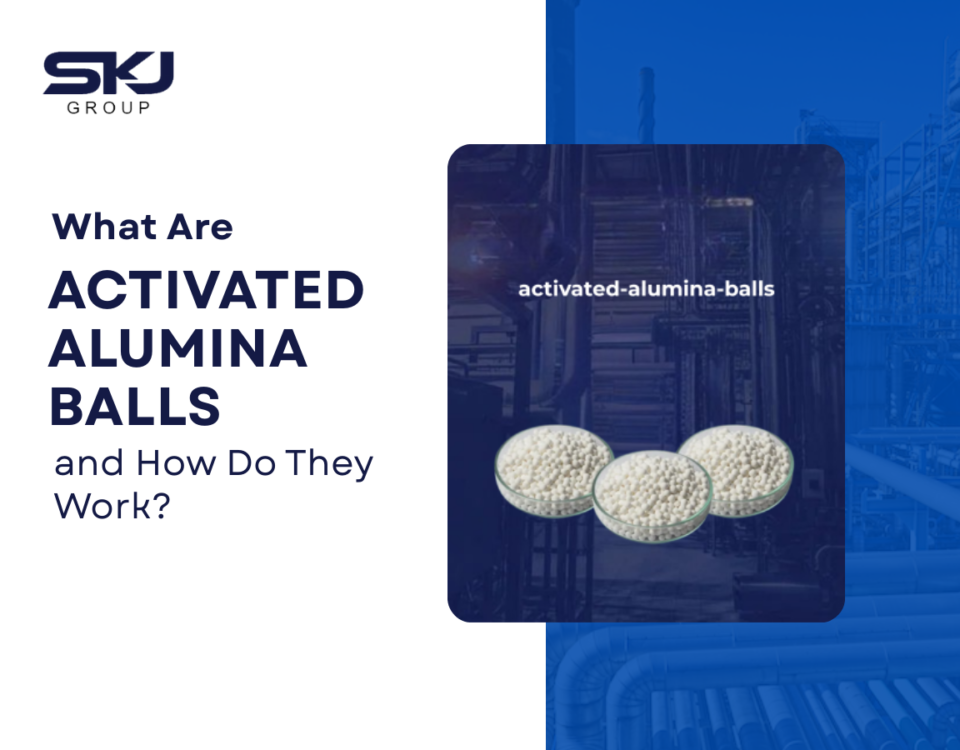What are ceramic saddles used for?

PP Pall Ring Industrial Processes
February 16, 2024
SKJ Group: Pioneering Advanced Ceramics for the Future
July 18, 2024Unraveling the Versatility of Ceramic Saddles: Applications, Benefits, and Insights
Introduction:
In the realm of chemical engineering, few materials possess the versatility and efficacy of ceramic saddles. These small, saddle-shaped pieces of ceramic are renowned for their exceptional surface area, thermal stability, and resistance to harsh chemical environments. While their names might evoke images of equestrian equipment, ceramic saddles play a vital role in various industrial processes, ranging from water treatment to petrochemical refining.
In this comprehensive exploration of What are ceramic saddles used for? , we will delve into the myriad applications, benefits, and insights surrounding ceramic saddles. From their unique structural design to their wide-ranging utility in diverse industries, we will uncover the reasons behind their widespread adoption and continued relevance in the modern era.
Understanding Ceramic Saddles:
Ceramic saddles, also known as ceramic ring saddles or Berl saddles, derive their name from their distinctive shape, which resembles that of a saddle commonly used for horseback riding. These saddles are typically manufactured from high-quality ceramic materials such as alumina, porcelain, or silicon carbide, which impart exceptional mechanical strength, chemical resistance, and thermal stability.
The design of ceramic saddles is characterized by a series of ridges and grooves, which create a tortuous pathway for fluids passing through a packed bed. This unique structure maximizes surface area and facilitates efficient mass transfer, making ceramic saddles an ideal choice for applications requiring high-performance separation, absorption, or catalysis.
Applications of Ceramic Saddles:
- Chemical Processing: Ceramic saddles are extensively utilized in chemical processing industries for various applications, including distillation, absorption, and stripping. Their high surface area and superior resistance to corrosive chemicals make them well-suited for environments where traditional packing materials may degrade or fail.
- Environmental Remediation: In environmental engineering applications, ceramic saddles play a crucial role in air and water purification processes. They are employed in packed bed scrubbers, biofilters, and wastewater treatment systems to remove pollutants, odors, and contaminants from industrial effluents.
- Petrochemical Refining: Within the petrochemical industry, ceramic saddles are employed in refineries and gas processing plants for gas-liquid contact operations such as hydrocarbon fractionation, desulfurization, and sweetening. Their robust construction and thermal stability enable them to withstand the harsh conditions encountered in refining operations.
- Water Treatment: Ceramic saddles are utilized in water treatment facilities for the removal of dissolved contaminants, organic compounds, and heavy metals from municipal and industrial wastewater streams. They are commonly employed in packed bed reactors, ion exchange columns, and activated carbon filters for effective pollutant removal.
- Pharmaceutical Manufacturing: In pharmaceutical production processes, ceramic saddles find application in solvent recovery, purification, and crystallization operations. Their inert nature and high purity make them suitable for use in pharmaceutical-grade processes where product quality and regulatory compliance are paramount.
Benefits of Ceramic Saddles:
- High Surface Area: The intricate design of ceramic saddles maximizes surface area, facilitating efficient mass transfer and enhanced contact between fluid phases. This results in improved separation efficiency and process performance compared to conventional packing materials.
- Chemical Resistance: Ceramic saddles exhibit exceptional resistance to a wide range of corrosive chemicals, acids, and solvents, making them suitable for use in aggressive process environments. This resistance ensures long-term durability and reliability, even in challenging operating conditions.
- Thermal Stability: With their high thermal conductivity and resistance to thermal shock, ceramic saddles can withstand elevated temperatures encountered in various industrial processes. This thermal stability allows for reliable performance across a broad range of operating temperatures without degradation or loss of mechanical integrity.
- Low Pressure Drop: The open structure of ceramic saddles promotes unrestricted flow through packed bed columns, resulting in minimal pressure drop and energy consumption. This characteristic is particularly advantageous in large-scale industrial applications where efficiency and cost-effectiveness are paramount.
Insights into Ceramic Saddles:
- Material Selection: The choice of ceramic material for saddle production depends on factors such as chemical compatibility, thermal stability, and mechanical strength. Alumina-based ceramics are commonly preferred for their excellent chemical resistance and mechanical properties, while specialty ceramics such as silicon carbide may be employed in extreme temperature or corrosive environments.
- Packing Density: The packing density of ceramic saddles within a column or reactor significantly influences process performance and efficiency. Optimal packing density ensures sufficient contact between fluid phases while minimizing pressure drop and channeling effects.
- Bed Height and Diameter: Proper design and sizing of packed bed columns using ceramic saddles require careful consideration of bed height, diameter, and hydraulic loading to achieve desired separation or reaction outcomes. Computational fluid dynamics (CFD) modeling and pilot-scale testing are often employed to optimize column design and performance.
- Maintenance and Cleaning: While ceramic saddles are renowned for their durability and longevity, periodic maintenance and cleaning may be necessary to remove fouling, scale, or deposits that accumulate over time. Mechanical or chemical cleaning methods may be employed to restore packing performance and prolong service life.
- Innovation and Advancements: Ongoing research and development efforts in materials science and process engineering continue to drive innovation in ceramic saddle design and manufacturing. Advances in additive manufacturing, surface modification techniques, and composite materials hold promise for further enhancing the performance and versatility of ceramic saddles in diverse applications.
Conclusion:
In conclusion, ceramic saddles represent a cornerstone of modern chemical engineering, offering unparalleled versatility, performance, and reliability across a spectrum of industrial applications. From chemical processing and environmental remediation to petrochemical refining and water treatment, these small but mighty components play a vital role in facilitating efficient mass transfer, separation, and reaction processes.
As industries evolve and environmental and regulatory challenges mount, the demand for innovative solutions capable of meeting stringent performance criteria will continue to grow. In this context, ceramic saddles stand poised to remain indispensable tools for engineers and researchers seeking to optimize processes, reduce environmental impact, and enhance operational efficiency in the pursuit of a sustainable future.




